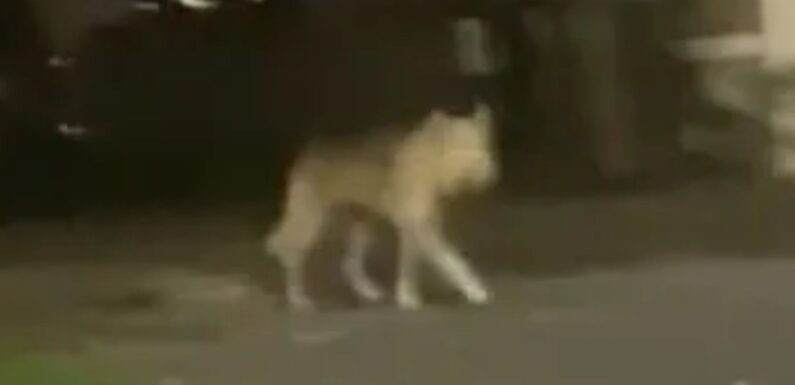
DUBLIN Zoo has responded to rumours that a wolf escaped an enclosure and has been prowling the streets of Dublin in recent days.
A video circulating on social media shows a large canine strutting down a footpath in the city, captioned "Wolf escapes from Dublin Zoo."
In the clip, one man can be heard saying: "That's the wolf that got out of Dublin Zoo earlier on. That's the wolf there."
The camera then points to the animal, which does resemble a wolf-like creature.
The video soon went viral, having been viewed over 700,000 times.
But Dublin Zoo has shut down the claims as it confirmed that no such escape had taken place.
A spokesperson said he could not "shed any light on the video" but said, "all seven of the wolves in Dublin Zoo are accounted for".
In the video's comments section, TikTok users quickly pointed out that the 'wolf' was simply a large dog known to walk around the Ballyfermot area.
"That's what they call a German Shepherd," one person wrote.
Another said: "That's the dog from Labre Park in Ballyfermot. It's a big softie".
Most read in Irish News

Radio legend Chris Evans, 57, reveals he's been diagnosed with cancer

Spain's World Cup goal ace tragically learns of dad's death after lifting trophy

Massive nineties boyband set to reunite for film & first new song in 22 years

We arrested Lucy Letby… she expected us & her behaviour in custody was chilling
While a third said: "wolves are bigger then that mate."
Elsewhere, Dublin Zoo has recently made a major change to its layout after it unveiled a brand new habitat set to house a new lemur species.
The Nocturnal House will become home to the aye-aye lemur, which is native to the island of Madagascar.
A male named Peanut and a female named Tahiri arrived from Bristol Zoo last September, and their offspring will be moving into the new digs.
The new Nocturnal House at Dublin Zoo is located just beside Himalayan Hills and Sea Lion Cove.
It has been built specifically to meet the needs and unique ecology of this nocturnal species. It mimics nighttime conditions allowing visitors to observe and learn about the nocturnal aye-aye's active nature.
COMPLETE DARKNESS
Visitors to the habitat will enter in complete darkness and will be guided by tiny lights on the ground to navigate safely and observe the animals.
Specialised lights and UV lamps will replicate daylight at night, encouraging the aye-ayes to sleep.
The aye-aye is the largest nocturnal primate and is related to monkeys, apes and humans.
They are visually striking animals, with dark brown or black fur and a bushy tail longer than their body.
They have large eyes and ears and slender fingers, including a long middle finger that they use to tap on trees to listen for insects moving beneath the bark.
Once they have chewed through the wood with their strong teeth, the same middle finger is used to fish for the insects. It is also used to scoop the flesh from fruits, which supplement the species' insect diet.
The aye-aye is listed as Endangered on the IUCN Red List.
They have very large home ranges and are rare wherever they occur.
Read More on The Sun
Radio legend Chris Evans, 57, reveals he’s been diagnosed with cancer
Boy, 11, dies after ‘incident’ at skate park leaving locals devastated
Existential threats to the species include the destruction of their natural habitat and unsustainable levels of hunting.
Some Madagascan people consider the aye-aye to be an omen of bad luck, and the animal has often been killed on sight, although there are laws in place that make this practice illegal.
Source: Read Full Article


